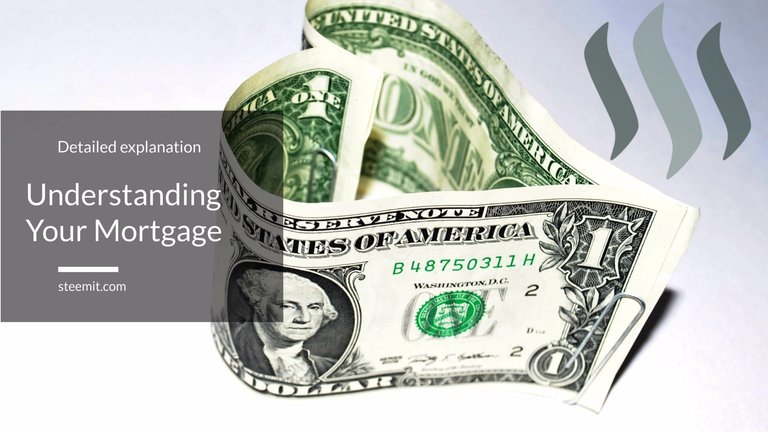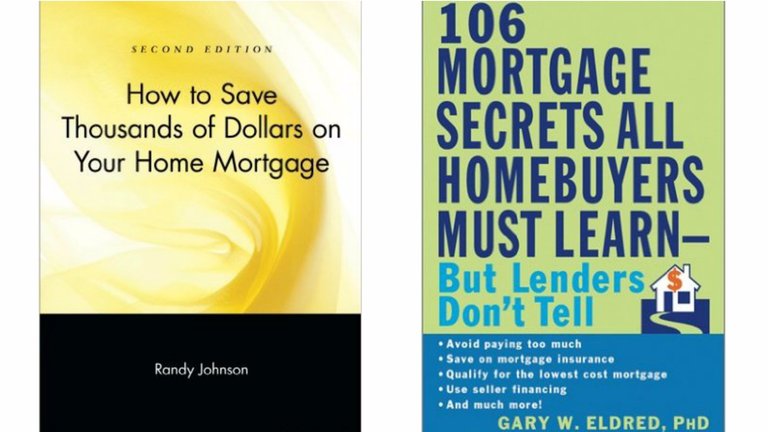For most people, their home mortgage is the largest financial commitment they will ever make. However, people will spend more time selecting the kitchen appliances than understanding how mortgages work. Considering that your mortgage will likely be over a hundred thousand dollars, getting a sub-optimal mortgage can cost you tens of thousands of dollars over the life of the loan.

Lets go through some of the common terminology used in the mortgage business.
Fully Amortizing Mortgage : You pay interest and principle payments every month.
Interest-only Mortgage : You pay interest but no principle. The loan balance stays constant. These loans usually have a fixed rate for a certain number of years (3,5,7 or 10) after which either the entire loan balance is due, or it is amortized over a certain number of years (often between 27 and 20 years).
Negatively Amortizing Mortgage or Neg-Am Loan: You do not pay the full interest and principle payments every month. As a result, your loan balance goes up every month. Its like paying compound interest. I’m not comfortable with these loans. There’s a tendency to over-leverage yourself and it can end up quite nasty. If you’re paying less than the interest due, your principle is getting bigger every year. At some point it becomes 10%, 20% or even 25% larger than the amount you borrowed and the lender says “NO MORE! Its time to payback principle and interest”.
Option ARMS: This is a form of the Neg-Am Loan where each month the borrower has an option to pay a payment thats based off the 15 or 30 year amortized schedule, an interest-only schedule or a negative-amortizing schedule. Its usually offered to people who wouldn’t usually qualify for a normal loan and is thus inherently riskier for the borrower. When the interest rates re-adjust after a few years, the resulting payment can be several times larger than what you were used to paying. And if you couldn’t afford the fully amortized payments on the original amount to begin with, how will you pay it now that its 10-25% more and your interest rate may have increased too?
Fixed-rate : The interest rate is fixed for the duration of the loan.

Adjustable-rate : The interest rate is fixed only for a short time (as low as 1 month upto 10 years), after which is adjusts every month, 6 months or 1 year based on some index and a margin. These Adjustable-Rate Mortgages (popularly called ARMs) have become incredibly popular in the past few years. Since the average home buyer moves every 7 years, there often isn’t a point in getting a 30 year fixed rate loan when a 7 year ARM might have a slightly lower rate and an interest-only feature which brings down your monthly payment. This would enable you to qualify for a slightly higher loan amount and thus getting more house for your buck!
Balloons : Some mortgages have a Balloon at the end of a certain number of years. A Balloon means that the entire loan balance is payable in full at a specific date. No, you don’t need to have cash on that date, you just need to refinance before then!
In commercial loans you’ll often see a 30 year amortized loan with a 10 year balloon. This reduces your monthly payments for the first 10 years but means you need to have an exit/refinance strategy before the 10 year period is up.
Interest rates are usually correlated to the 10 year Treasury (T-bill) yield or some other T-bill. Indices can be either lead or lag the 10 year T-bill. When rates are dropping you’ll want loan thats based on a leading index, but when rates are rising you’ll want a lagging index.
As you can see from the Graph, the COFI and MTA (12 Month Treasury Average) indices, which are tied to the 1 year T-bill are both lagging indicators.

Caps :There are caps on the amount an adjustable loan can adjust every year and also there’s a lifetime cap on how high your rate can go. Recently, I’ve seen 5/1 ARMS (thats an ARM with a fixed rate loan for 5 years followed by an annual rate adjustment) with a start rate of 6.5%, an annual rate increase cap of 2% and a lifetime cap of 12%. These rates will vary on your credit score.
Owner-Occupied and Non-Owner-Occupied : Not only will your rate will vary based on your credit score but also whether you intend to reside in the house or rent it out. NOO (rental properties) will always have a higher rate because they represent a higher risk to the lender.
Points : You can buy down your interest rate with discount points, which are a form of pre-paid interest. Sometimes, you may be charged origination points, which is just a fee to do the loan. Many brokers advertise a no fee, no point loan. All loans have fees. They may just not be obvious to the buyer.
Many lenders will show you a rate sheet which will indicate your rate depending on what sort of loan you want and whether you want to pay points, don’t want to pay points or even want a rebate to help pay the other closing costs. Depending on your scenario, your interest rate will differ.
You will need to ascertain how long the break even period is in each scenario to pay points and decide whether you will stay in the property for that duration. If you’re going to stay for 10+ years, it almost always makes sense to pay points to lower your interest rate.

Pre-Payment Penalties : The lender will penalize you if you try to pay off more than a certain amount of your mortgage within a given time-frame. Usually there’s a 20% limit in any given year and its usually a 1 to 3 year pre-pay time period. If you can sell the house but not refinance it without penalty, its called a soft prepay. If you can’t do either without incurring a penalty, its termed as a hard prepay. Many borrowers will take a pre-pay if it means they’ll get a slightly lower rate. If you didn’t know you had a pre-pay, your mortgage broker screwed you over to make a little extra money.
Closing Costs : Buying or refinancing is expensive. You will have to pay for an appraisal, points on the loan, maybe an origination fee, title insurance and pre-paid taxes and insurance. In addition, you will be charged “junk” fees like maybe $35 for a $12 credit score, $100 for a $30 wire, $600 underwriting fee, $350 doc-processing fee, and an assortment of other crap. I was once charged $100 for a post-close inspection to make sure I was actually living the new property. Some of these fees are negotiable.
When refinancing, if you stick to the same company that provided title insurance the first time, you can and should get a discount. That way you can save some money in closing costs.
Mortgage brokers can usually help you get a good loan, especially if you have shaky credit or income. However, there are many crooks out there too. One way mortgage brokers will screw borrowers is buy charging an upfront origination fee and then getting a kick-back from the lender to jack up your interest rate. (So you’re paying them to screw you over!). This kick-back is legal because its disclosed on your closing statement, called a HUD-1. However its diguised by giving it a fancy name like POC (Paid Out of Closing) or YSP (Yield Spread Premium).
If you see these on your HUD-1 and they’re more than 1% of the loan value, you’ve probably been had (unless it was a no point, no fee loan and then it may have been used to pay your closing costs). I know some sub-prime Mortgage brokers who deal with borrowers with bad credit who routinely make 6 points on a loan. Thats 12,000 on a $200,000 loan. Do you think they’re doing the borrowers a favor? Not on your life!
However, there are many brokers who are excellent and earn an honest day’s wage (even if they are a little over-paid!).
But always ask your broker (or lender) for their rate sheet and a GFE (good faith estimate). If they refuse to provide either, use someone else.
I strongly recommend you spend $20 and read the following books. You’ll save yourself from losing a lot of money in the largest loan you’ll ever take out.

Share and Enjoy!
Good information for folks... I was an investor of commercial and residentials... the mortgage is what makes a deal or makes a trap. Nice write up.
Great article, easy to understand the process.